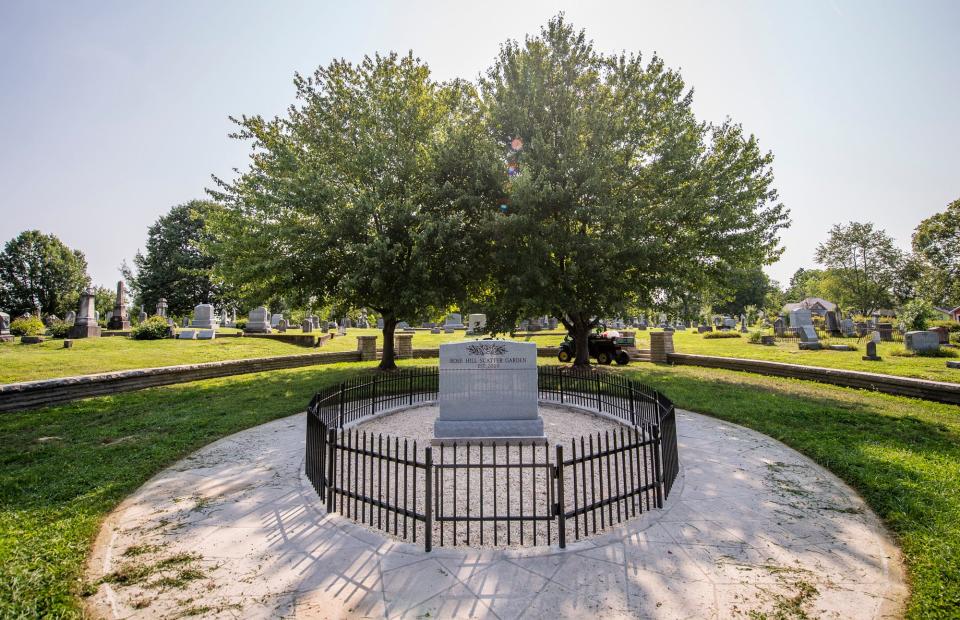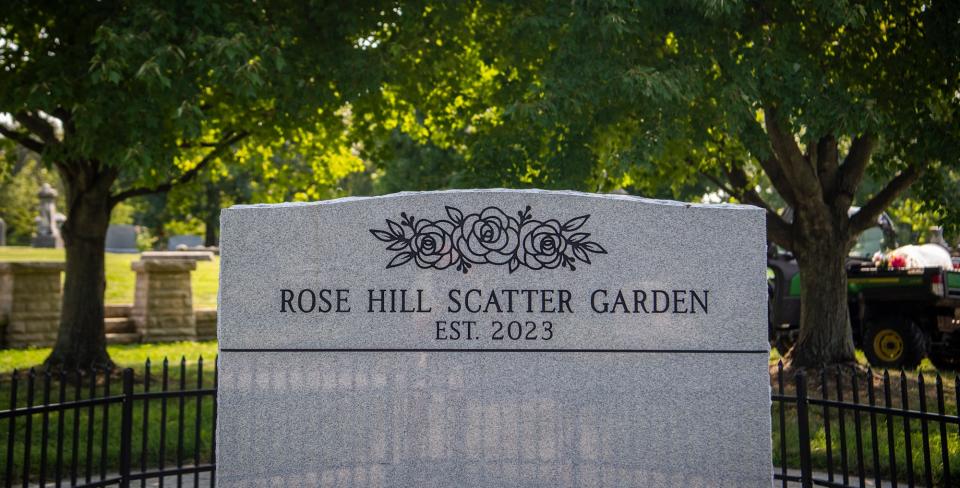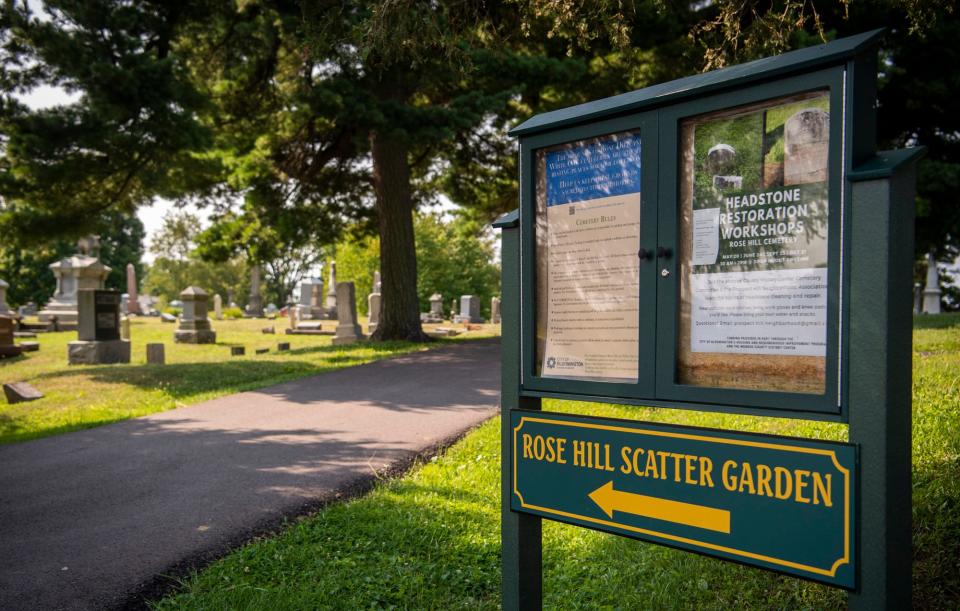City creates garden at Rose Hill Cemetery for scattering loved ones' ashes
What's left when a human body is incinerated at 2,000 degrees is about five pounds of gray ash the consistency of course-grain sand called "cremains."
The ashes are often preserved in a closed vessel that may be inurned at a mausoleum, buried in the ground at a cemetery or kept at home in a special place. Sometimes, cremains are not kept but scattered. Indiana has laws governing the practice, which is becoming more common.

Bloomington's Rose Hill Cemetery Scatter Garden
This month, the city of Bloomington opened its first cremains Scatter Garden at the historic Rose Hill Cemetery, which encompasses 28 acres off South Adams Street between Third Street and Kirkwood Avenue. It fulfills a vision of Mayor John Hamilton, who put forth the idea several years ago.
There's decorative fencing, a granite monument to the dead and decorative grass plants. A layer of quartz stone surrounds the monument, and that's where cremains are to be scattered.
How common is cremation?
The cremation rate in the United States has been increasing and was at 59% last year.
A 2022 report from the National Funeral Directors Association said nearly one-third of people who chose cremation want to have their cremains buried or interred in a cemetery. The rest are split among being kept in an urn, scattered in a sentimental location, split among relatives or placed in a columbarium at a place of worship.
Is scattering human remains good for the environment?
No. Cremains are highly alkaline and contain a high level of salt, which can damage the soil and be toxic to plants. Cremated human remains are about half phosphate and also contain calcium, sulfate, potassium, sodium, chloride, silica and aluminum oxide. Scatter gardens address these environmental concerns.

Barb Dunbar, operations coordinator for the Bloomington Parks and Recreation Department, oversees Rose Hill and has been ushering the Scatter Garden project along.
She said when cremains are scatted at the Rose Hill site, an area of gravel will be cleared and the ashes then poured out. The quartz pieces then will be raked over the cremains. A watering can will be available to help the ashes combine with the soil below. Annual rye grass that can grow in most soil types has been planted.
Are there laws governing the disposal of cremains?
Laws vary by state. In Indiana, cremains can be scattered in an area designated for that purpose, like Bloomington's new Scatter Garden. Human ashes also can be scattered on the property of the deceased or a family member, or other private property with the owner's consent.
Ashes can be scattered on uninhabited public land and in public waterways, with limitations. Before scattering ashes on public land in Indiana, check with the governing authority to find out about restrictions and special permits that might be required.

Indiana requires documentation be filed with the county recorder within 10 days after disposition of ashes. The information will serve as proof of a person's final resting place, so they can be traced in the future.
There are federal rules to follow as well. The Clean Water Act, for instance, prohibits scattering ashes within three nautical miles from land. The Environmental Protection Agency requires notification within 30 days of cremains scattered at sea.
How much does it cost to sprinkle cremains at Rose Hill?
Dunbar said there's a $300 fee to use the Scatter Garden to cast a person's ashes. The name of the deceased and their dates of birth and death can be added to the garden's granite monument for an additional $275.
Are there other cemetery options for cremains?
Rose Hill also has 11 remaining 4-by-5-foot cremation plots in the southwest corner of the cemetery available for $650 each. The plots are for the burial of cremains in a sealed urn; multiple urns — entire families — can be entombed in each plot.
Family members also can bury urns containing cremains above a casket in a regular grave, Dunbar said. Standard graves are dug 6-feet deep and cremain urns are usually buried about 3 feet beneath the ground surface.
Must a funeral home be involved?
Dunbar said yes. The crematory should be in contact with a licensed funeral director qualified to complete paperwork and issue a cremation certificate that must be presented to the cemetery, which can schedule a time for the ash scattering.
"They have to go through a licensed director who does the paperwork for them. It doesn't take long to get the permit," she said. "We want people to go through us and the funeral director to have record of it."
Interested in using Bloomington's Scatter Garden?
Contact Rose Hill Cemetery at 812-349-3498. They can offer advice on how to proceed.
Contact H-T reporter Laura Lane at llane@heraldt.com or 812-318-5967.
This article originally appeared on The Herald-Times: New garden at Rose Hill Cemetery is for scattering loved ones' ashes

